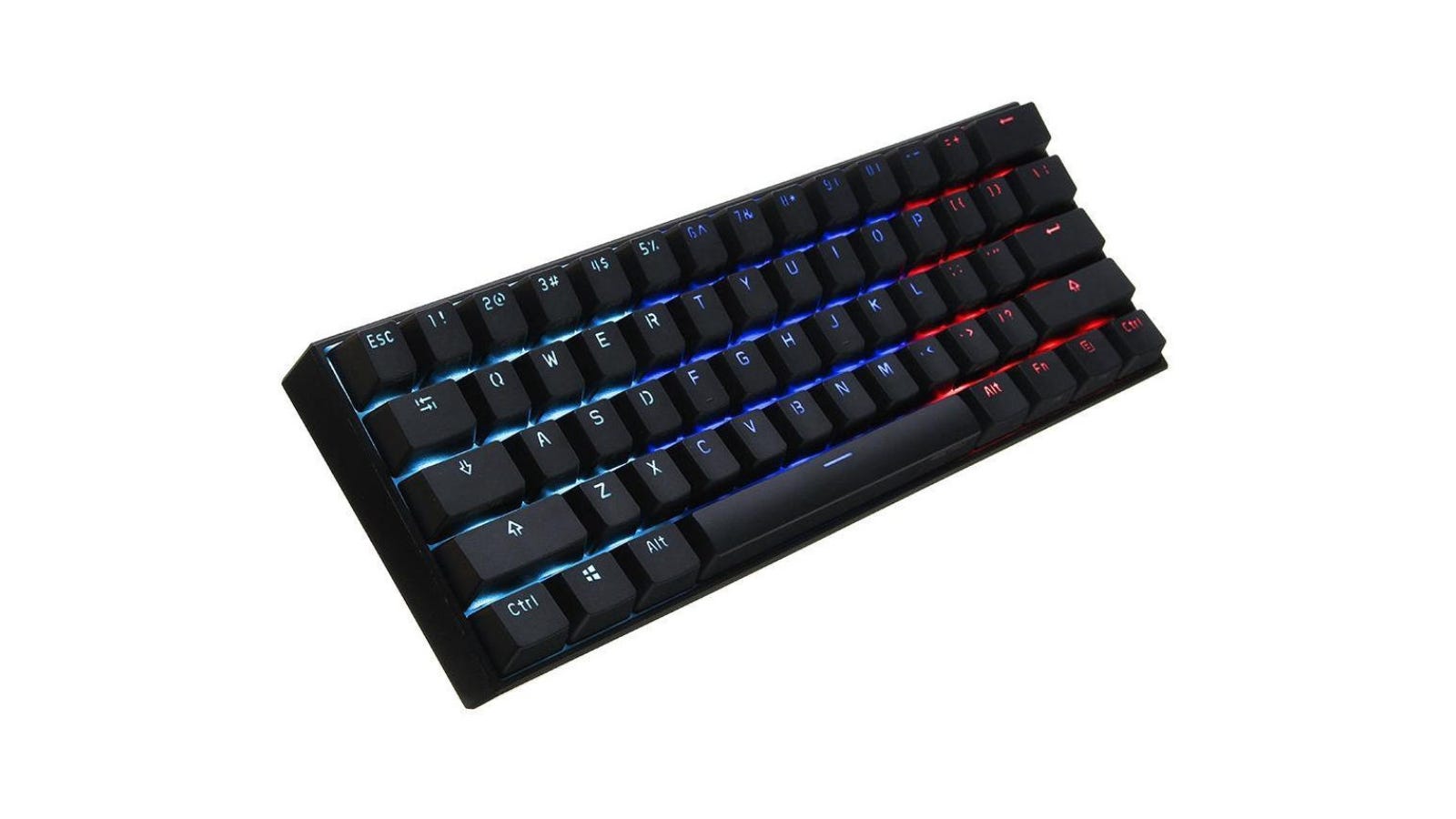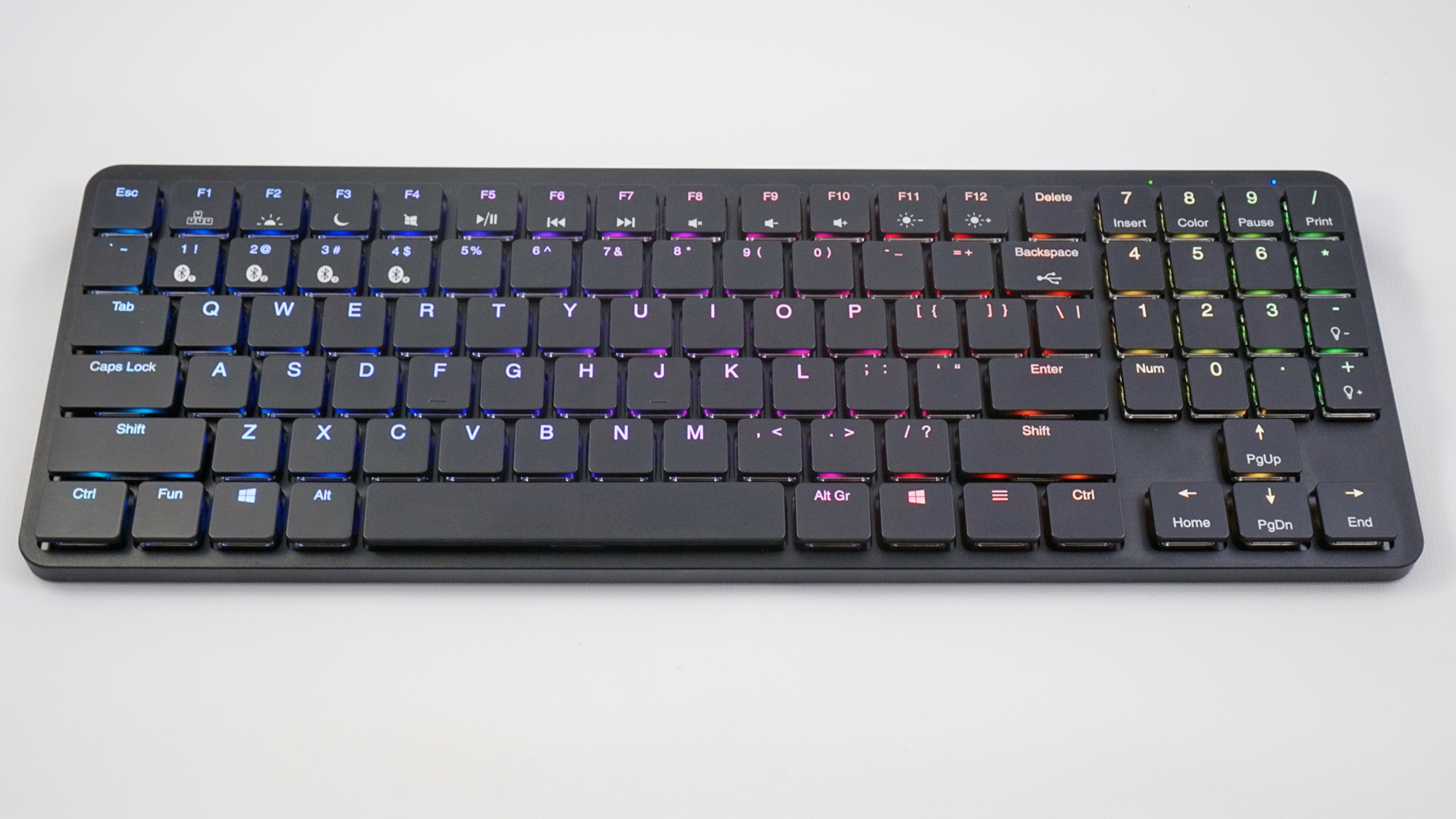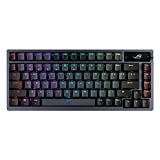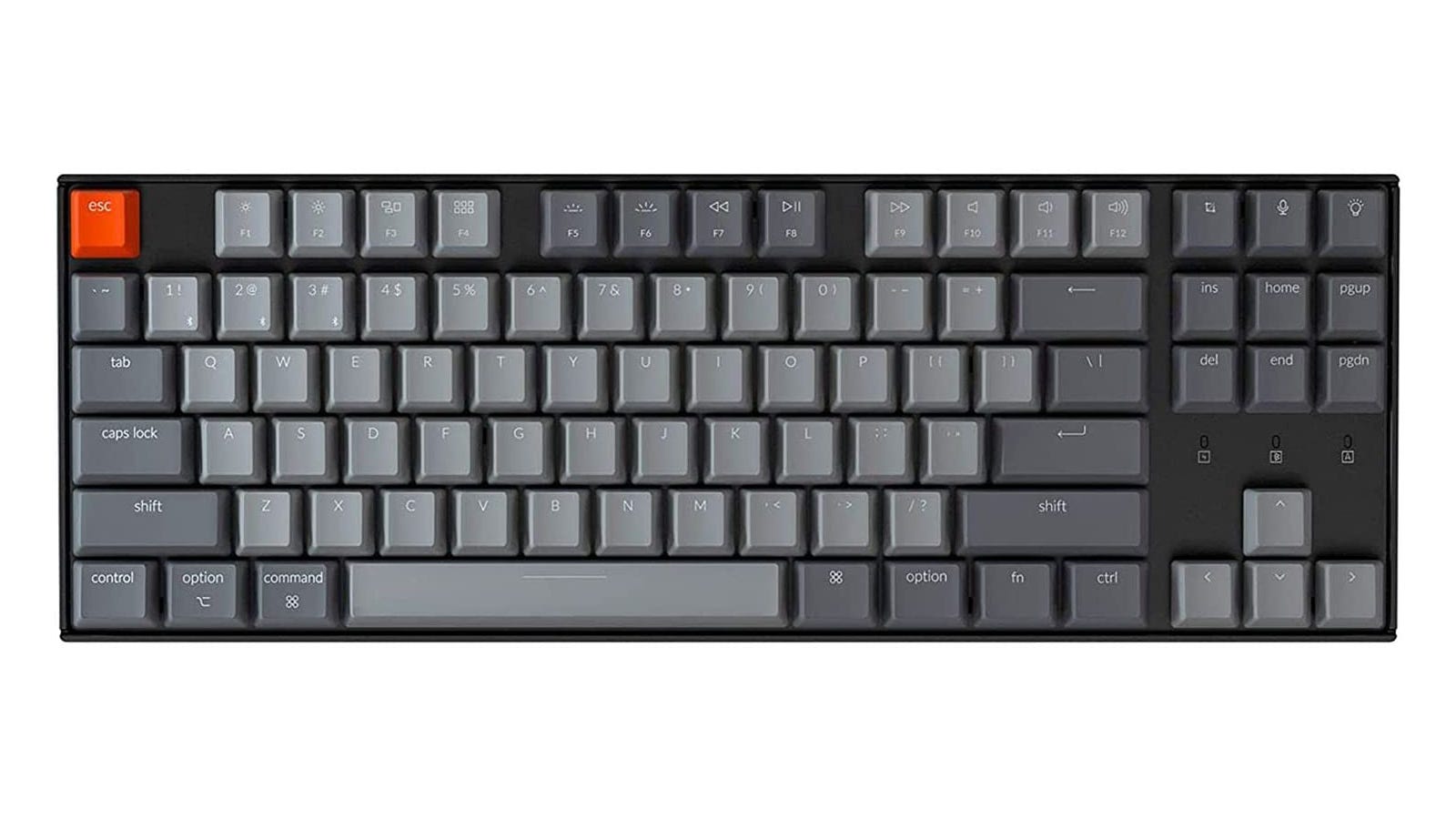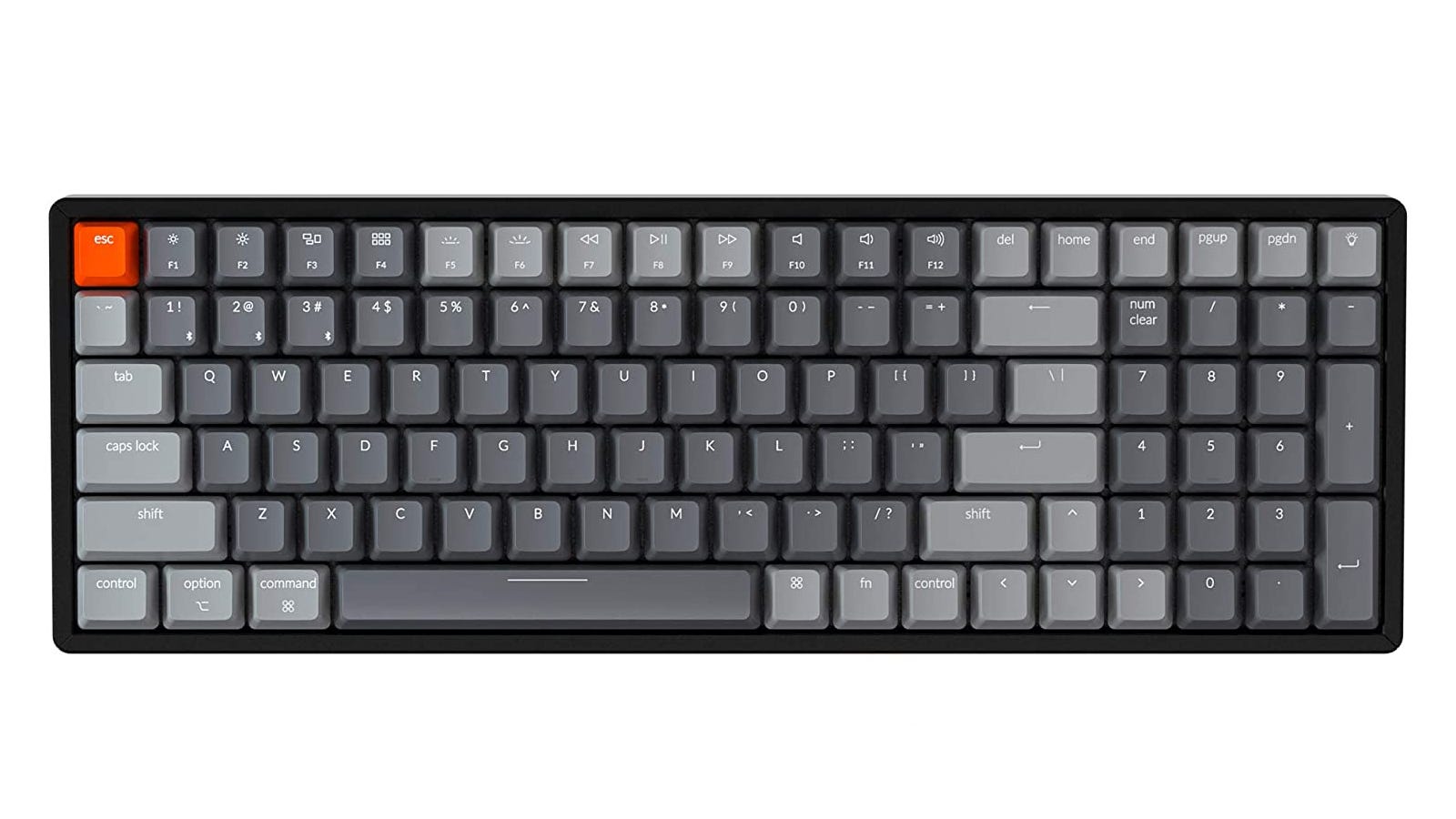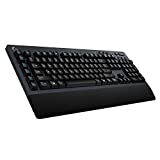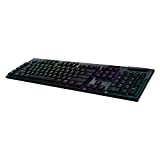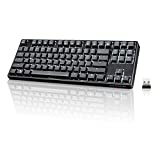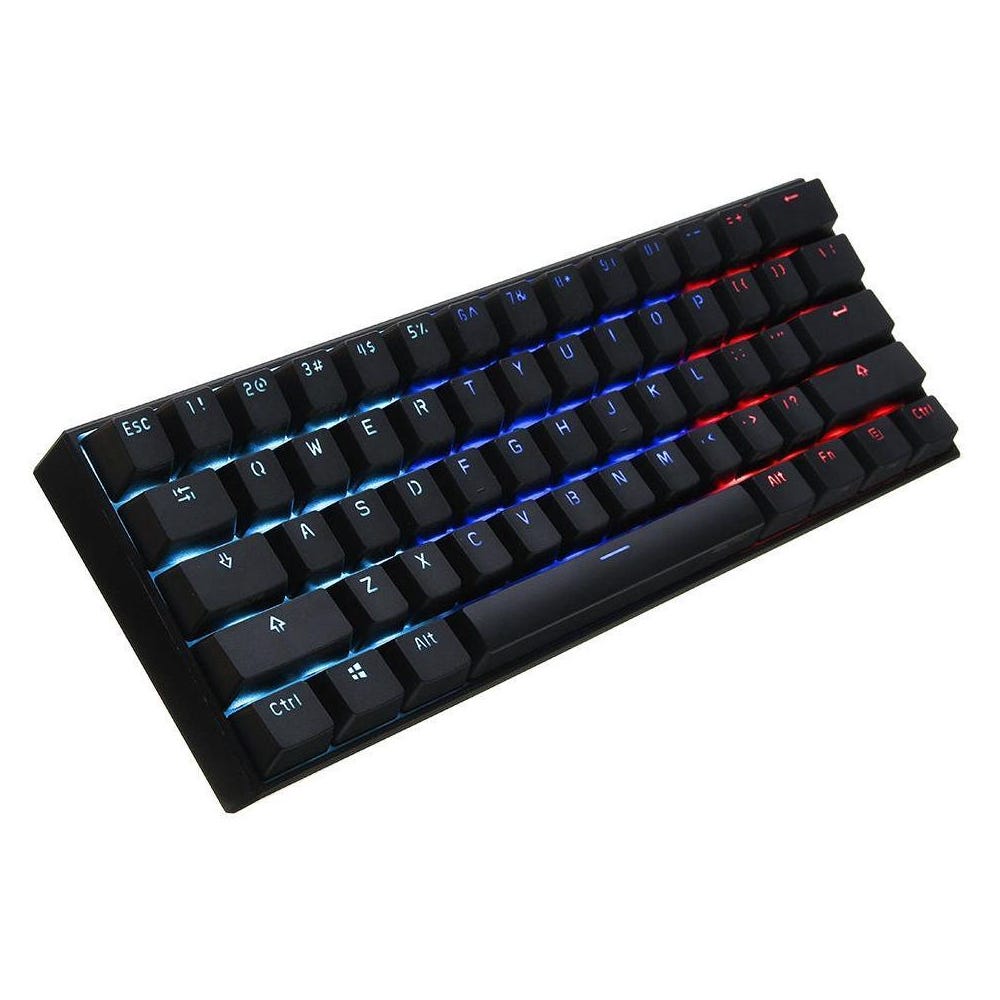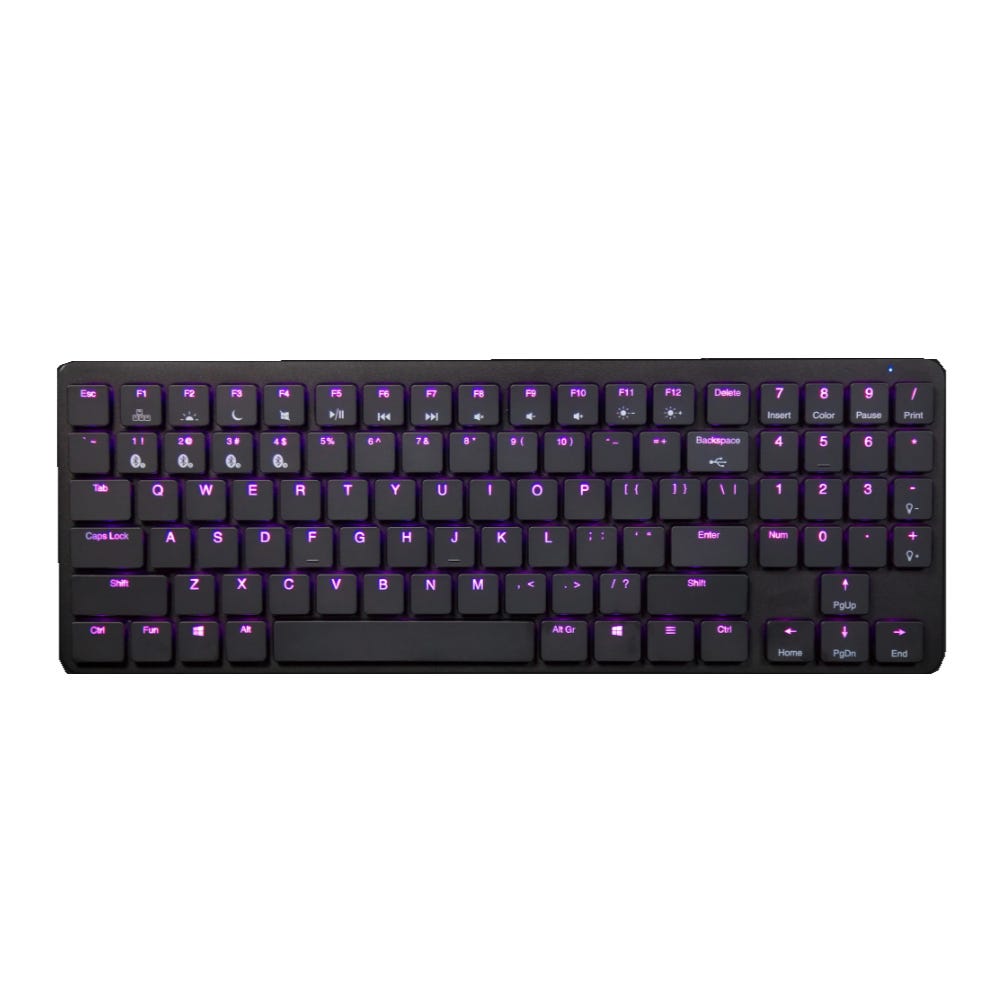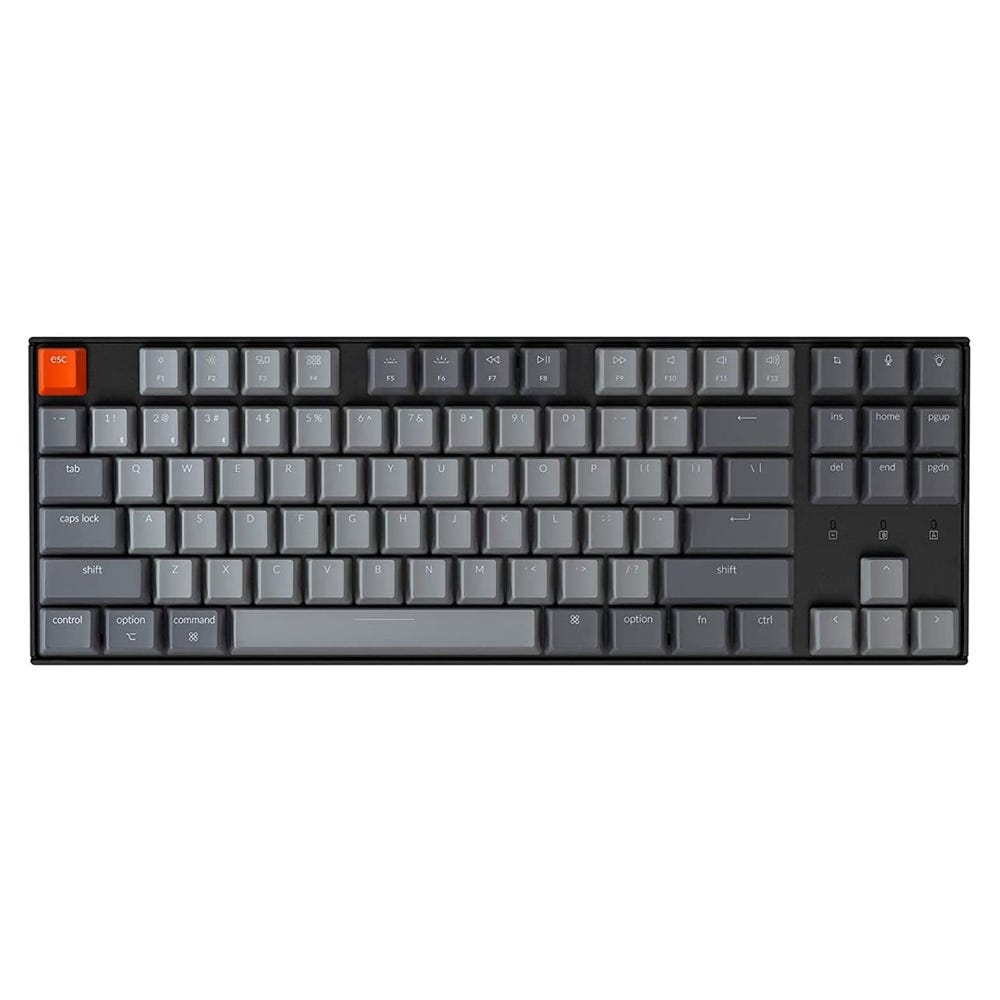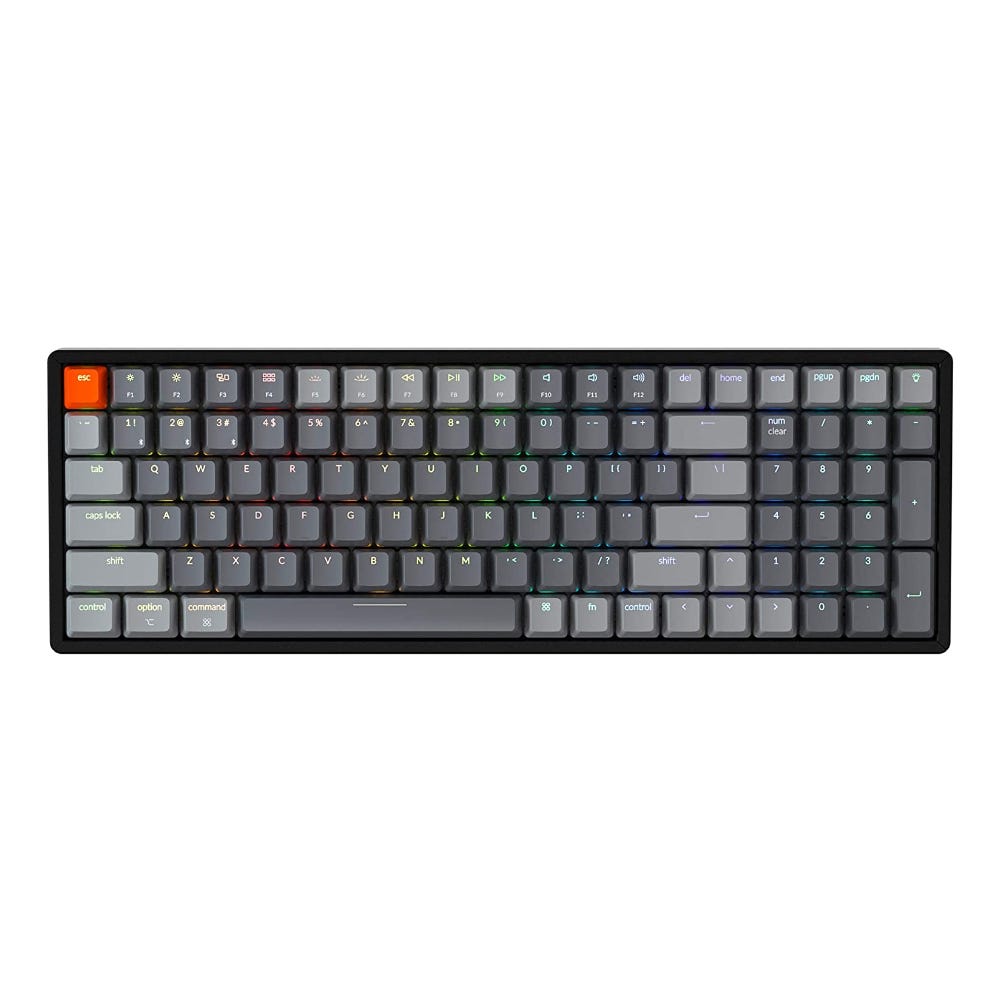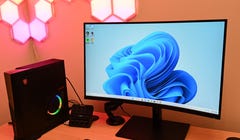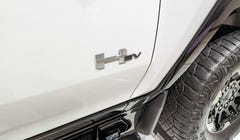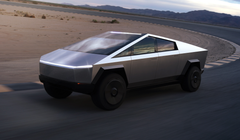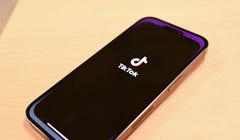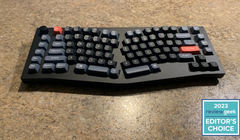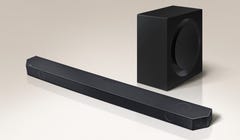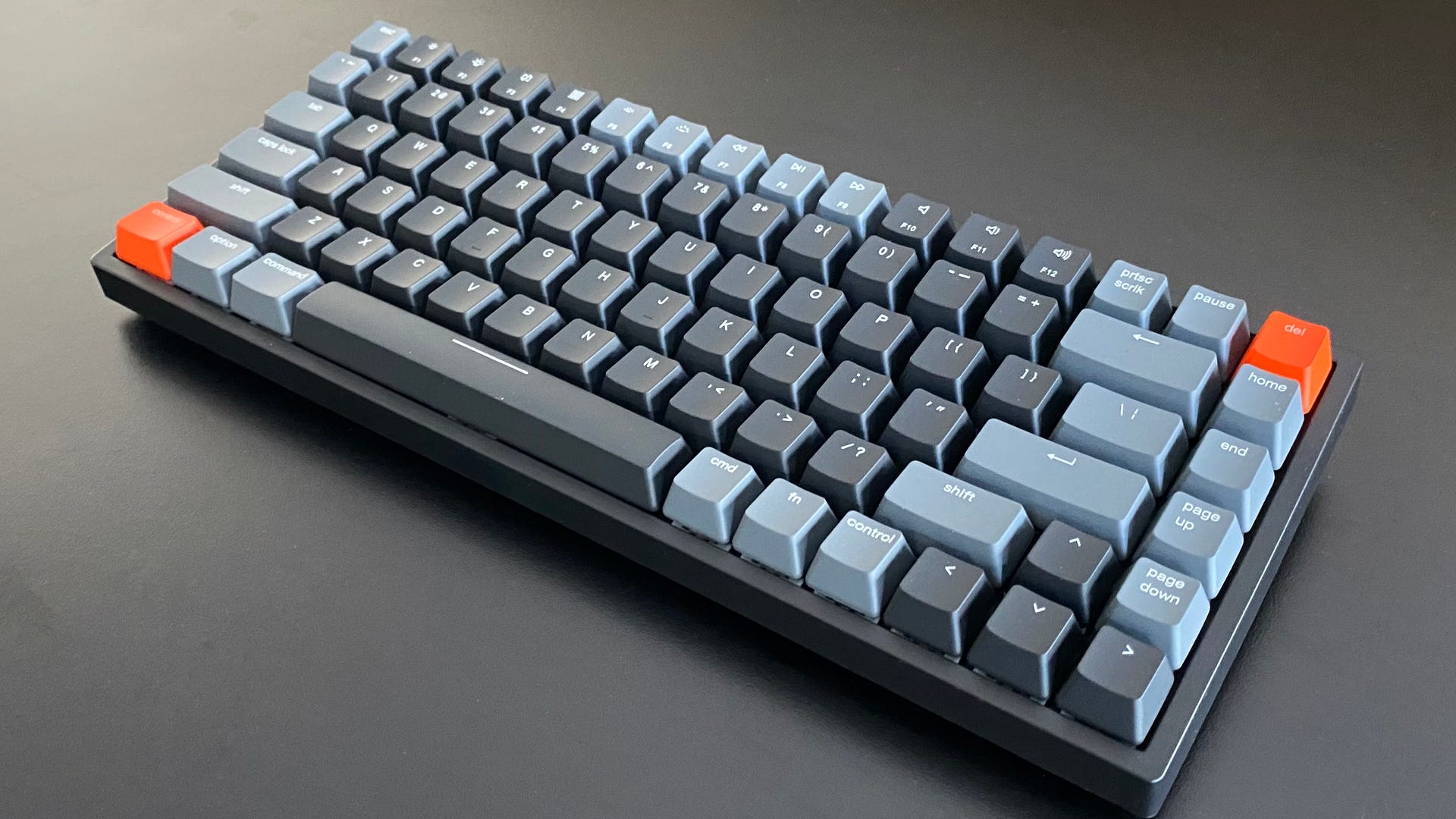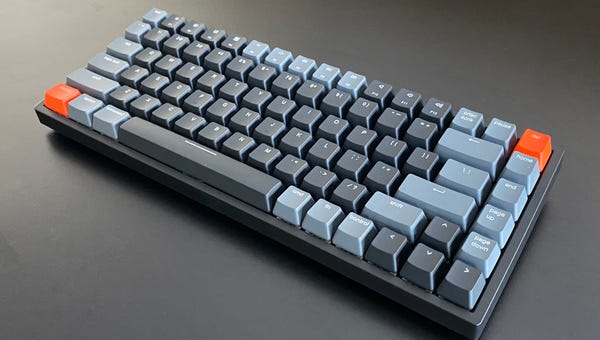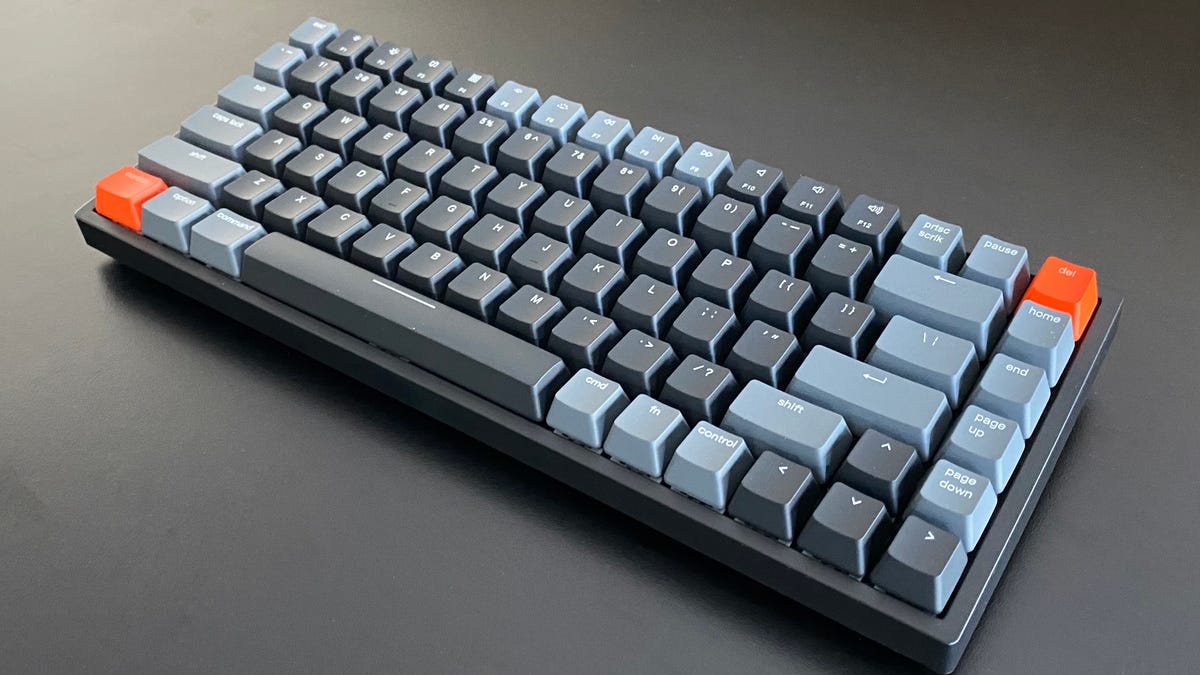
Update, 4/5/23: Article has been updated for 2023. Replaced BlackWidow V3 Pro with ASUS ROG Azoth
What to Look for in a Wireless Mechanical Keyboard
You might not have as many choices when it comes to wireless mechanical keyboards compared to wired ones, but that doesn’t mean you should just buy any board. There’s a lot to know about mechanical keyboards, but these are the factors you should be the most concerned with.
- Build Quality: Mechanical keyboards are expensive, so you want something worth the price you paid. Most keyboards will either be made out of plastic or aluminum, with aluminum being the more durable but expensive option.
- Keycaps: Not far off from build quality, the keycaps on your keyboard are important. Most keycaps are either made out of ABS or PBT plastic, with PBT being more durable. But that doesn’t mean you should immediately disregard ABS keycaps, as high-quality ABS keycaps are still worth using. There’s also the technique of doubleshotting the legends on the keycaps, which prevents them from fading away over time. Some keyboards also have alternative functions for certain keys through specific key combinations, and having those alternative functions printed on the keycaps is useful.
- Switch Selection: Switches are located under each keycap and are what make mechanical keyboards special. There are tons of different switches out there. Still, they all mainly fall into one of three categories: clicky (switches that make a noticeable “click” noise), tactile (switches with a significant tactile bump but no click), and linear (smooth switches with no tactile bump or click). Switches can also have different stem designs, with the standard being the MX-style cross stem. Non-standard stems rarely have aftermarket keycaps made for them, so that’s something worth keeping in mind.
- Layout: There are plenty of keyboard layouts to choose from besides the standard full-size and tenkeyless (a full-sized layout with the Numpad chopped off) layouts you see on most boards. Most of these layouts have you trading off certain keys in exchange for a smaller board; whether that’s worth it or not is up to you.
- Connection Method: While all of the keyboards on this list are wireless, there are multiple forms of wireless connectivity. The most obvious is Bluetooth, which is also the easiest to use across all platforms. But some keyboards rely on a USB-A RF connector to work properly, and others may use their own unique connector. Most wireless boards also give you the option of plugging in the keyboard so it can be used as a standard wired keyboard for when the battery gets low. (This is usually through the charging cord, which means you can use and charge the keyboard simultaneously.)
- Battery Life: Using a wireless keyboard means you’re going to have to worry about battery life. It’s also important to note that backlit keyboards will burn through batteries significantly quicker with the backlighting on versus it being off.
- Battery Type: While most keyboards use rechargeable batteries, a few use AA for power. We’ll note what each keyboard relies on.
- Additional Features: RGB backlighting, reprogrammable keys, macros, and dedicated media controls are not things a keyboard needs to be great, but they can make using your new keyboard that much more of a delight.
Ultra-Compact: Anne Pro 2
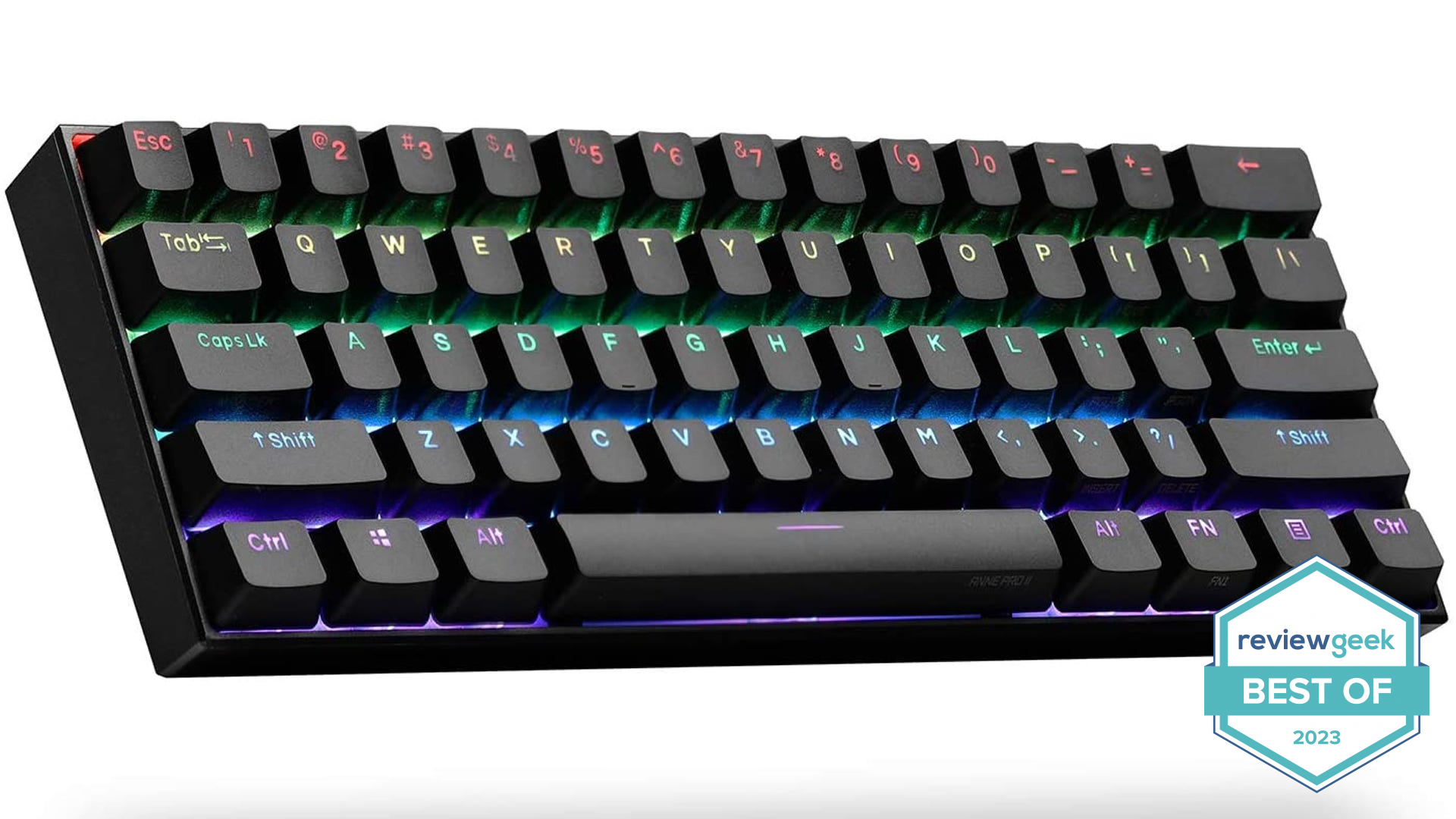
Pros
- ✓ Compact
- ✓ Extremely customizable through software
- ✓ Quality keycaps
- ✓ Lots of switch types available
Cons
- ✗ Missing a lot of keys
If saving desk space is your main concern (or you want a keyboard ideal for travel), then the 60% layout is the way to go. It cuts out a lot of keys (most of the navigation keys, dedicated arrow keys, and the function row) and focuses on just giving what you need. And when it comes to wireless boards for that layout, the Anne Pro 2 is one of the best around.
Not only is the keyboard wireless, but it has a few quality of life features as well. You can still access missing keys through key combinations (such as FN+W for the up-arrow key), and there’s even side printing on the keycaps to tell you what each key’s alternative action is. The keycaps are made out of PBT plastic and are doubleshot. The keyboard features full RGB backlighting, which can be deeply customized in the companion app ObinsKit, where you can also reprogram the keyboard’s layout and layers to make each key (or key combination) do whatever you want—you can even create macros. The Anne Pro 2 relies on Bluetooth for connectivity and works in wired mode (with a USB-A cord) if you need it to.
Finally, when it comes to switch options, there’s a good selection for the Anne Pro 2. You can choose between 11 different switches: Cherry MX Blue, Cherry MX Brown, Cherry MX Red, Cherry MX Silver, Gateron Blue, Gateron Brown, Gateron Red, Kailh Black, Kailh Brown, Kailh Red, and Kailh White Box. You can get the keyboard in either black or white (and that applies to the keycaps as well). You can also expect the Anne Pro 2 to last about eight hours on a full charge (although you can expect it to last longer with the lighting off), and it uses a rechargeable battery.
Anne Pro 2
With plenty of quality of life features, and the ultra-compact layout, the Anne Pro 2 is the ideal board for those looking to save desk space.
Slim and Stylish: Hexgears X-1
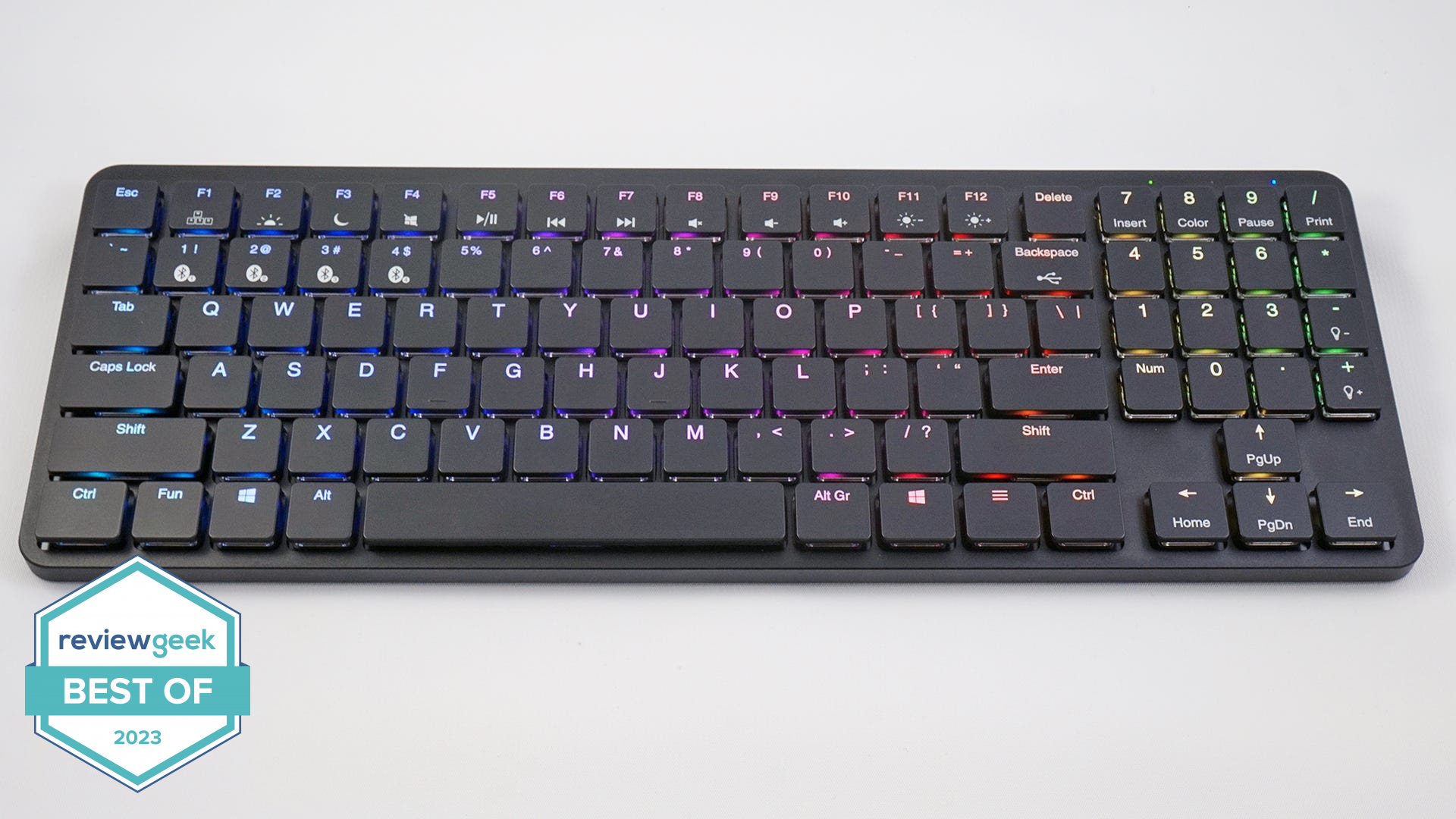
Pros
- ✓ Sleek style
- ✓ Very thin and compact
- ✓ Aluminum body
Cons
- ✗ Low-profile switches aren't for everyone
- ✗ No software
If you want something compact that doesn’t get rid of as many keys as the Anne Pro 2, then the Hexgears X-1 may be what you’re looking for. It’s an ultra-slim keyboard at only 0.8 inches thick, and it uses a heavily compacted and unique layout. As you can see from the previous image, you still have the number and function rows, dedicated arrow keys, and even a full Numpad, with navigation keys such as Home and Delete being relegated to key combinations.
The X-1 relies on the Kailh low-profile switches to achieve its thin frame, which uses a unique stem design (so no aftermarket keycaps here). The body of the keyboard is made out of solid aluminum, which should help avoid flex despite the keyboard’s thin profile.
There isn’t a companion app for the X-1, which means there are no reprogramming options available. If you want to customize the backlighting, you’ll have to do it through various key combinations. With the backlighting on, the X-1’s rechargeable battery lasts for about eight hours, but it can last for upwards of 40 hours with the lighting off. You can choose between three switches: Kailh Choc Brown, Red, or White. It also comes in either a black or white body. The X-1 uses Bluetooth to connect wirelessly, but it also comes with a USB-A cable for wired connectivity.
Best for Gaming: ASUS ROG Azoth
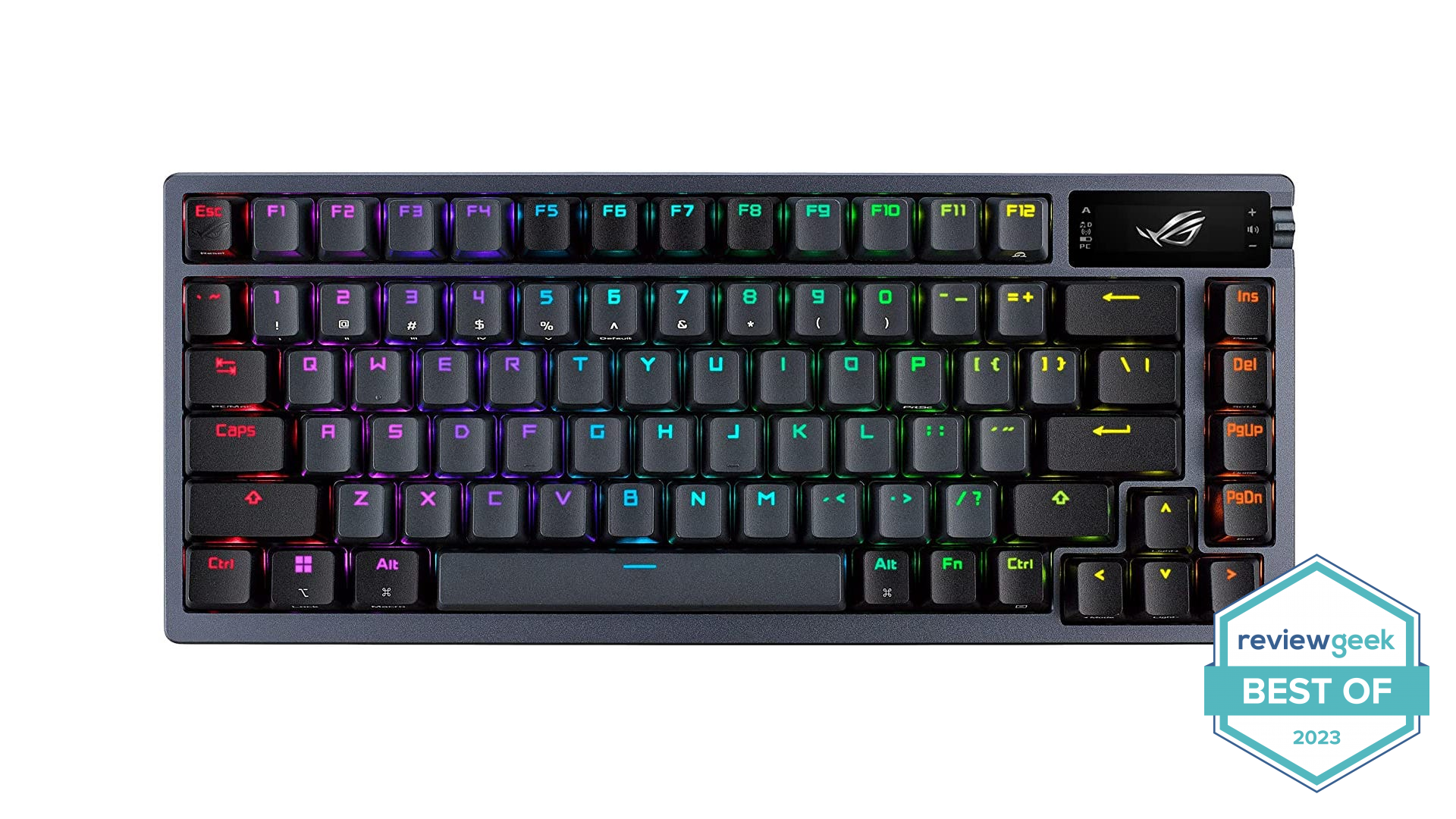
Pros
- ✓ Silicone gasket mount
- ✓ Tri-mode connection allows for Bluetooth, ROG SpeedNova, and wired USB
- ✓ Hot-swappable ROG NX mechanical switches
Cons
- ✗ Expensive
The ASUS ROG Azoth wireless mechanical keyboard is the ultimate gaming keyboard for those seeking a high-performance, long-lasting experience. Featuring a unique silicone gasket mount with three layers of dampening foams, the Azoth provides an unparalleled typing experience. Plus, the tri-mode connection allows the user to use Bluetooth to connect and toggle between three devices, ROG SpeedNova wireless technology for up to 2,000 hours of low-latency gaming in 2.4 GHz RF wireless mode, or to use a standard wired USB connection.
The OLED display and intuitive controls make it easy to make adjustments on the fly. At the same time, the hot-swappable ROG NX mechanical switches provide a smoother click and eliminate any bouncy sounds. The pre-lubed keyboard stabilizer produces less friction for smoother keystrokes and stability for longer keys, with ROG PBT doubleshot keycaps providing a premium feel and long-lasting durability. Additionally, the ROG Azoth includes a DIY Switch lube kit with a switch opener, keycap puller, switch puller, lube station, brush, and a bottle of Krytox GPL-205-GD0 lubricant for further customization.
The ergonomic design of the Azoth has two pairs of keyboard feet of different heights that provide up to three tilt positions, allowing for a comfortable and customized experience. The Azoth is also entirely compatible with the Mac operating system, allowing users to quickly switch between Windows and MacOS modes.
Razer BlackWidow V3 Pro
A great choice for gamers who demand high performance and versatility.
Hot-Swappable: Keychron K8
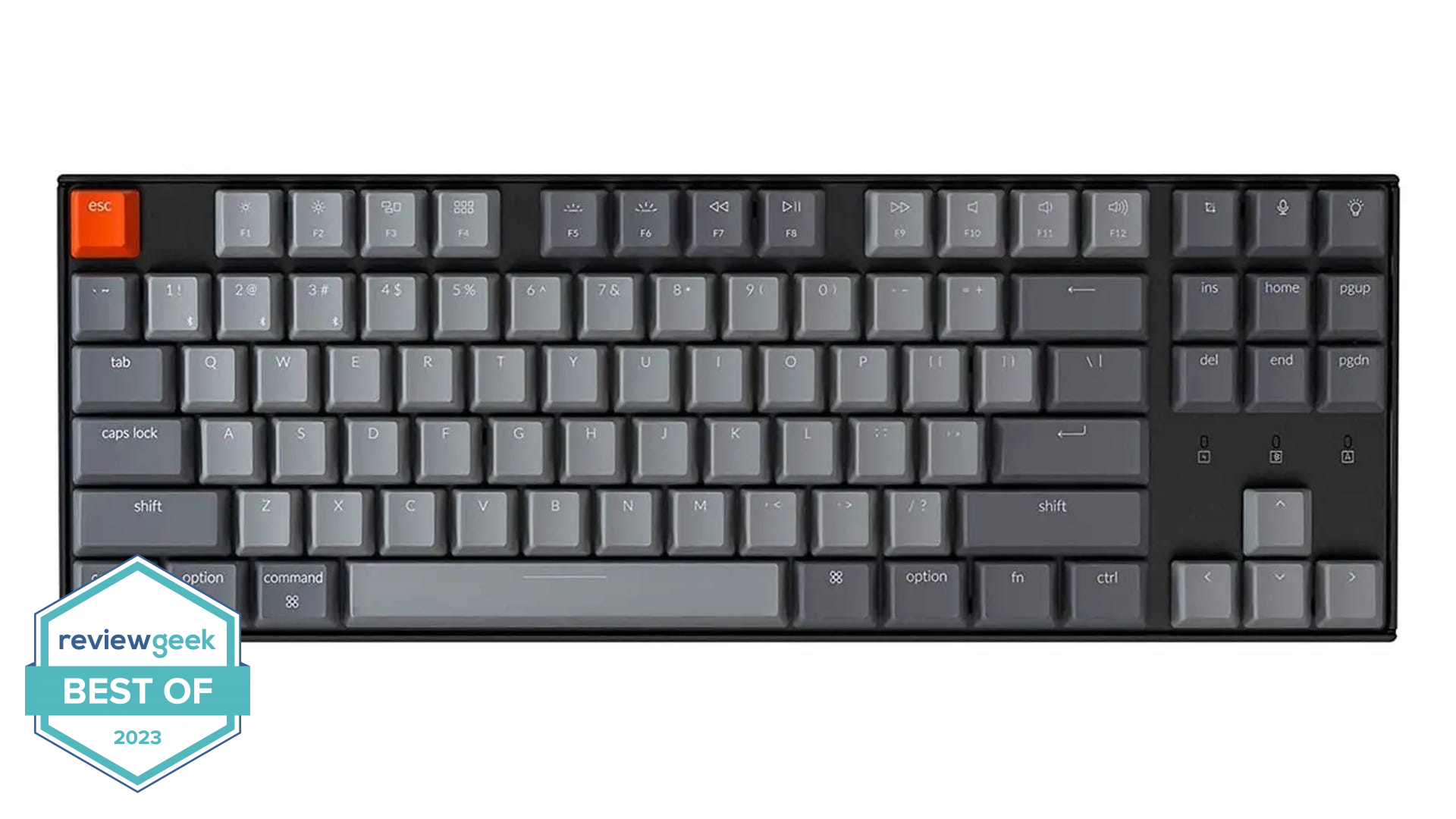
Pros
- ✓ TKL layout
- ✓ Hot-swapping
- ✓ Lots of choices when ordering
- ✓ macOS friendly
Cons
- ✗ No software
Hot-swappable keyboards are great! They allow you to quickly switch out the switches in your keyboard without as much as glancing at a soldering gun—which can save you a lot of time and complications. And if you want hot-swapping with wireless functionality, then Keychron’s K8 keyboard is your best bet.
The K8 uses a tenkeyless layout, so there’s little adjustment needed if you’re used to a full board. There’s no companion app for it at the moment—Keychron says it will release one “soon,” but the company has also been saying that for the past year or so. But even out of the box, the K8 is programmed to use various key combinations to give you full access to any missing keys and full media controls. The keycaps (which are made out of ABS plastic) help out with this, with all alternative functions for each key printed on the keycaps.
As far as options go, there are quite a few. You can get this board with either a plastic or aluminum body, white or RGB backlighting, and with either Gateron (Red, Blue, or Brown) or LK optical (which promise lower latency and come in either Red, Blue, or Brown variants) switches. You can also choose to get the K8 without the hot-swapping functionality, cutting the price down by about $10.
Notably, the K8 comes preinstalled with macOS keycaps, along with an additional set of Windows keycaps in the box—which is pretty rare in the mechanical keyboard world. It uses Bluetooth for wireless but can be used wired with the included USB-A cable—the battery lasts for about 70 hours with static backlighting on.
There’s also the Keychron K6 which has all the features of the K8 but in the more compact, 65% layout.
Compact without Sacrifices: Keychron K4
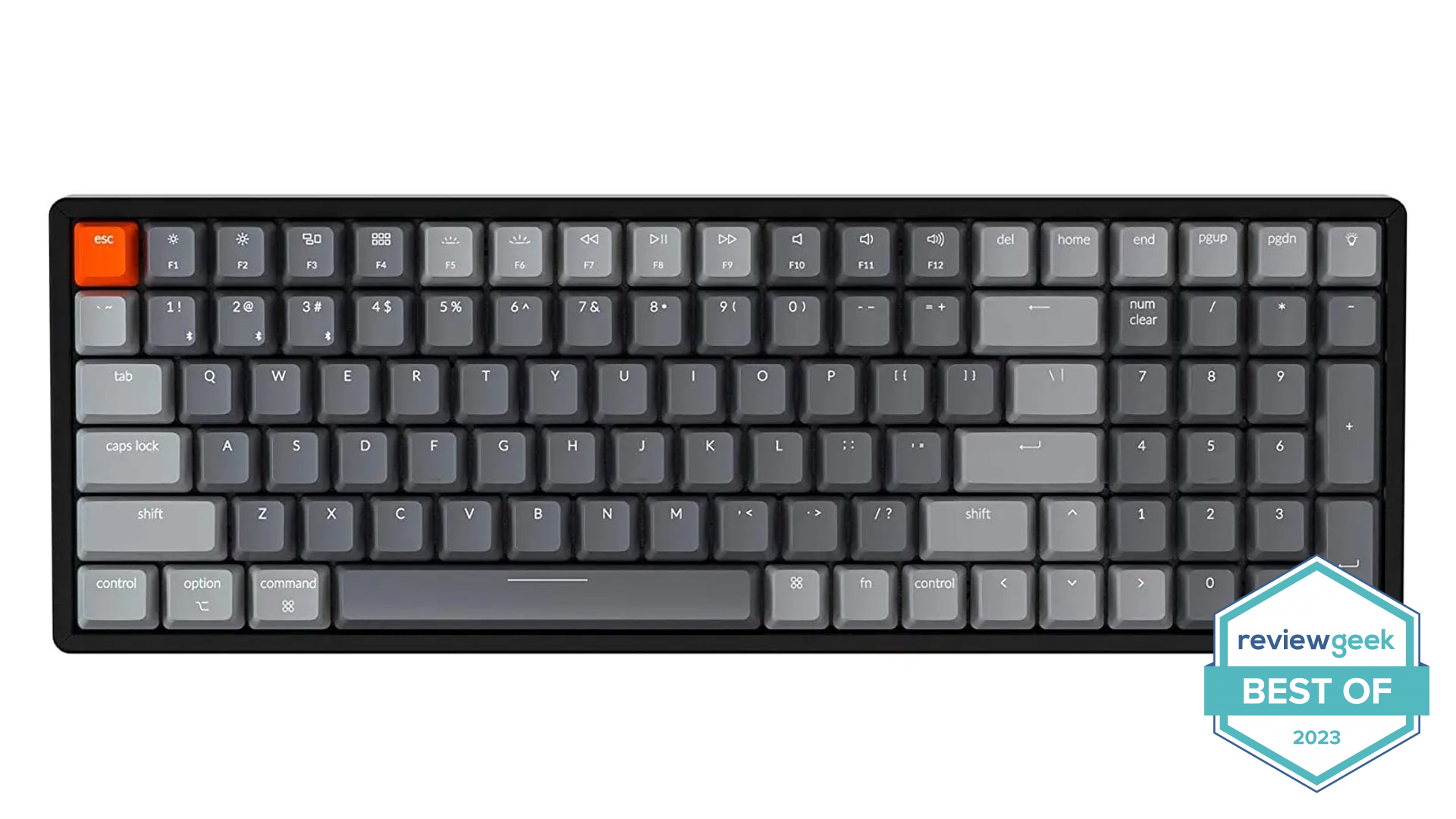
Pros
- ✓ Useful layout
- ✓ Lots of choices when ordering
- ✓ macOS friendly
Cons
- ✗ No software
Another keyboard from Keychron. Yet, while the K4 may not feature hot-swapping like the K8, it’s still a great keyboard. The K4 has a 96% layout, which you can think of as a compacted version of the full layout. It does this by clumping all the keys together wasting as little space as possible.
Like the K8, there are no reprogramming tools for the K4, but you can still access media controls (and the few missing keys) through key combinations printed on the keycaps. You still get macOS-friendly keycaps out of the box, with an additional set of Windows keycaps also included. And, just like the K8, the K4 uses Bluetooth for wireless, with an included USB-A cable for wired mode.
You can choose between aluminum or plastic bodies, along with either white backlighting or full RGB. The K4 also offers a wide variety of switches, including LK Optical Blue, Red, and Brown switches, along with Gateron Blue, Red, Brown, and Yellow switches. It can last for around 72 hours on a full charge with static backlighting.
If you want an even more compact board, the K2 uses the 75% layout—it uses the same clumping idea as the 96% layout, but only uses the keys a tenkeyless board would have.
Traditional With Flair: Logitech G613
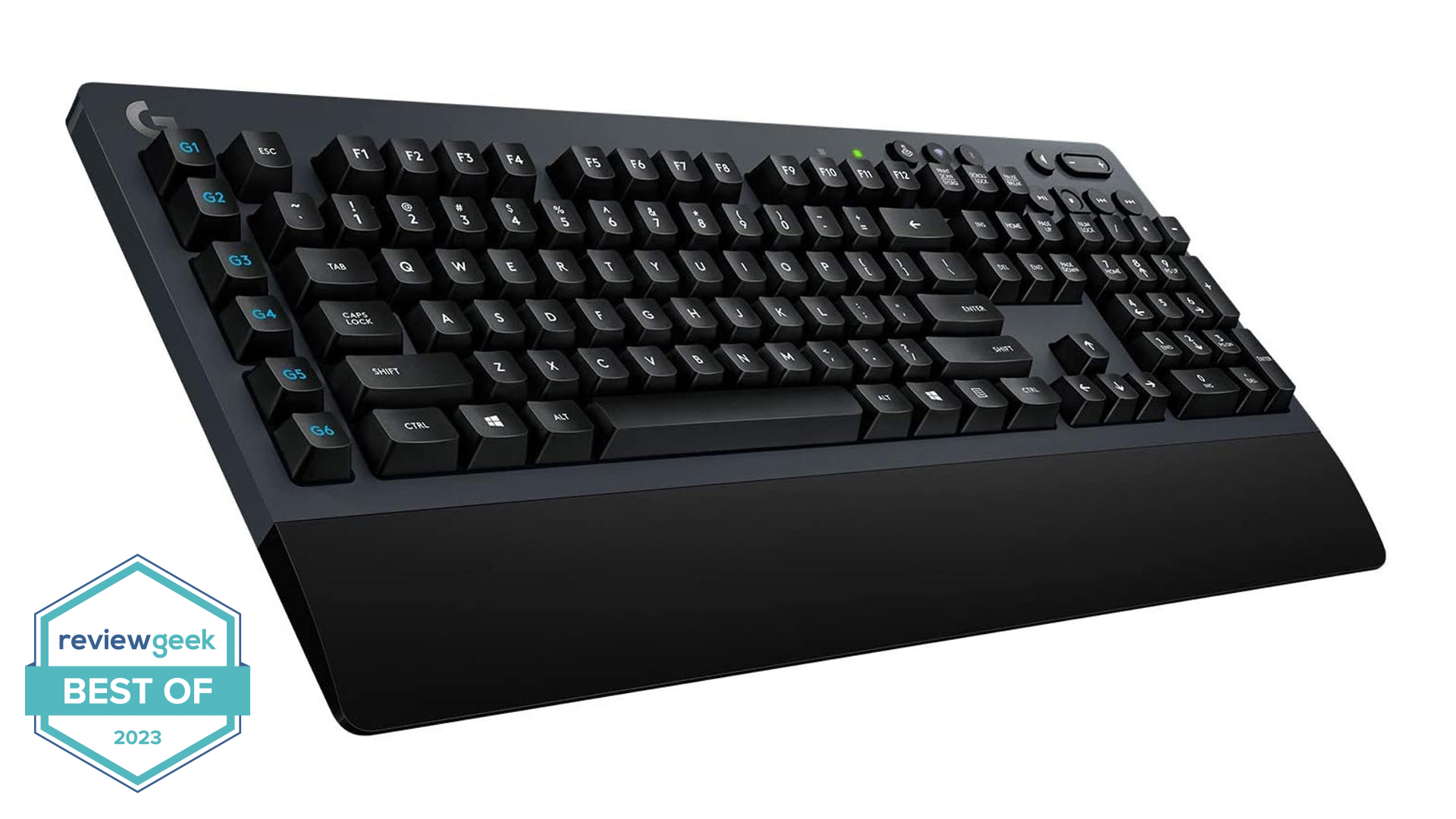
Pros
- ✓ Built-in wrist rest
- ✓ Low-latency wireless
- ✓ Reprogrammable macro keys
Cons
- ✗ Only one switch type available
The G613 is a fairly standard full-sized keyboard, but it has plenty of features to make it stick out. The most notable of which is Logitech’s Lightspeed wireless which massively cuts down on latency compared to standard Bluetooth keyboards. It’s primarily meant for gaming, but having those few milliseconds of delay shaved off makes a satisfying impact when using the keyboard in general. This uses a USB-A dongle to connect, but the G613 can also use Bluetooth if needed.
Alongside the standard full layout, the G613 also has six “G-Keys” that can be reprogrammed in Logitech G Hub. You can only use Romer-G switches with it, which is a light tactile switch. There’s no backlighting to be found on the G613, but it does have a suite of dedicated media controls located above the Numpad, which is always great to see. It also has a wrist rest built-in to improve ergonomics. The final feature of note on the G613 is the battery life, which Logitech states lasts for up to 18 months of regular use on two AA batteries—definitely impressive.
Logitech G613 LIGHTSPEED Wireless Mechanical Gaming Keyboard, Multihost 2.4 GHz + Blutooth Connectivity - Black
A great all-around keyboard with lightspeed tech backing it up.
Quick and Thin: Logitech G915
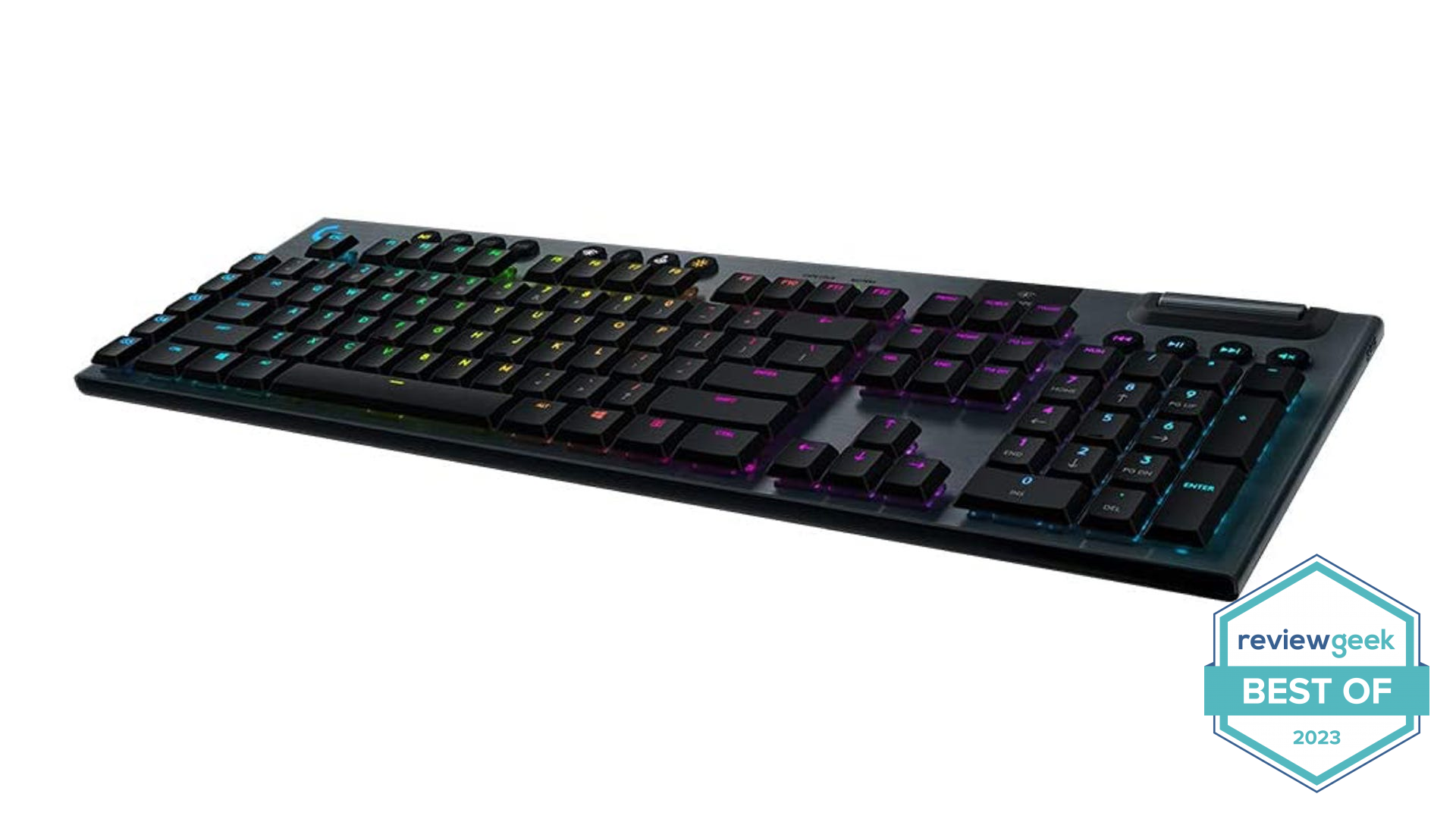
Pros
- ✓ Thin but durable
- ✓ Media controls
- ✓ Good software
Cons
- ✗ Expensive
- ✗ Low-profile switches aren't for everyone
The G915 is a full-sized or tenkeyless board that uses low-profile switches to make the keyboard thinner. It features a full aluminum body, dedicated media controls, along with a volume scroll wheel, and the full-sized version comes with five reprogrammable “G-Keys.” Logitech’s Lightspeed wireless is used instead of Bluetooth to lessen wireless delay, which works splendidly with the low-profile switches which also help cut down latency. It does require a USB-A dongle, but the keyboard can be easily switched into Bluetooth mode if you need to.
You can choose between three different switches: GL Clicky, GL Tactile, and GL Linear. The full-sized version lasts for about 30 hours with lighting on, and the TKL version lasts for about 40 hours with lighting on. (Both last significantly longer with lighting off.) Both versions use a rechargeable battery.
Logitech G915 LIGHTSPEED RGB Mechanical Gaming Keyboard, Low Profile GL Clicky Key Switch, LIGHTSYNC RGB, Advanced LIGHTSPEED Wireless and Bluetooth Support - Clicky
An ultra-thin keyboard with great dedicated media controls.
The Budget Option: VELOCIFIRE Mechanical Keyboard
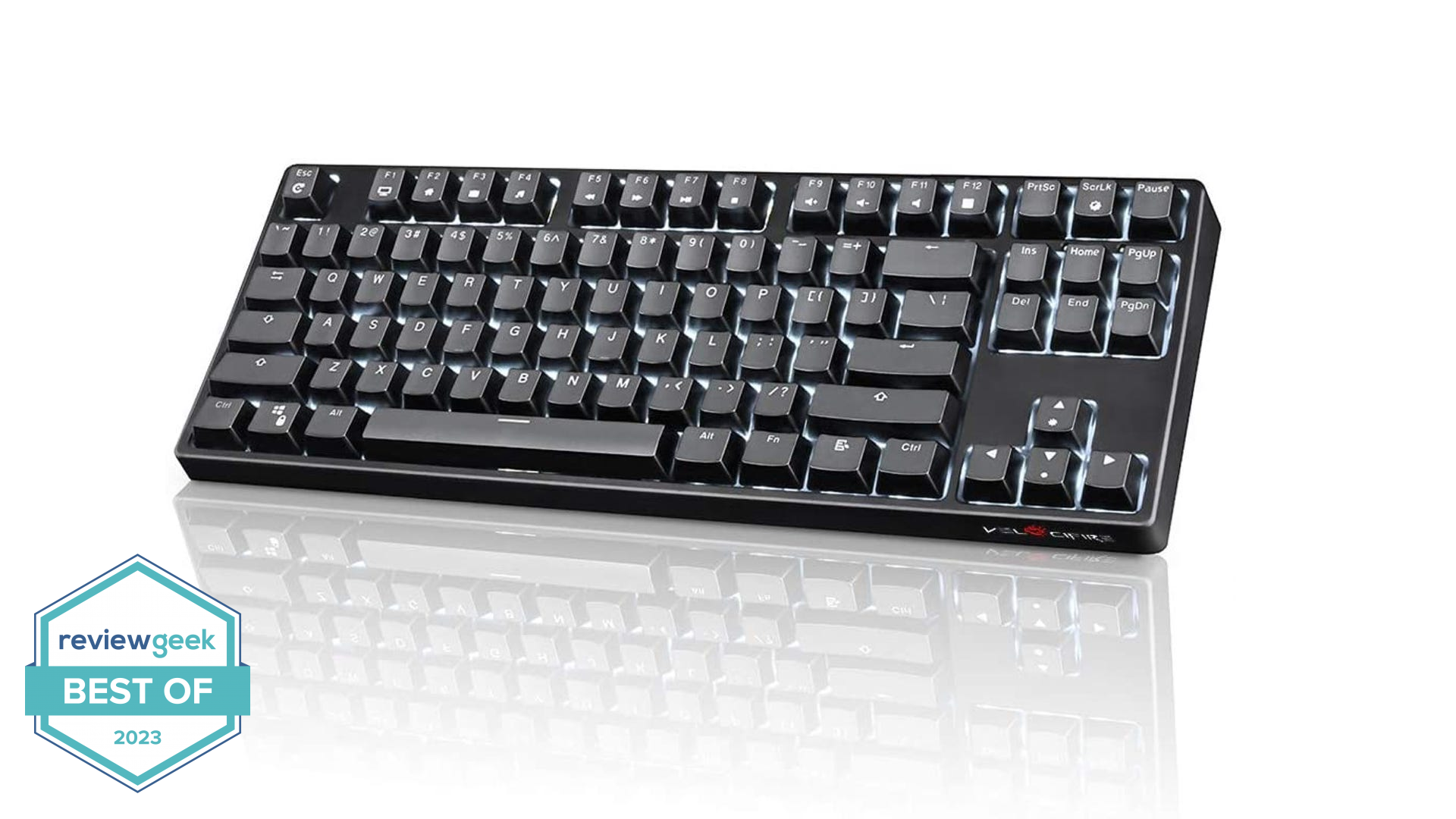
Pros
- ✓ Affordable
- ✓ Backlighting
- ✓ Uses real mechanical switches for a low price
Cons
- ✗ Build quality isn't great
- ✗ No software
All of the keyboards discussed so far have been pretty pricey, but VELOCIFIRE’s keyboard manages to strike a more budget-friendly price.
There’s not much to say about this board, as it solely features white backlighting, and it comes installed with a nameless tactile switch. But regardless, for the price, it’s a solid board whether you’re typing or gaming. You can choose to get it either in a black or white body, and there’s a full-sized version of the board as well. Both the TKL and full-sized versions rely on a USB-A dongle for wireless, but they work in wired mode as well.
VELOCIFIRE doesn’t provide an estimated battery life, only stating that it comes installed with an 1850 mAh rechargeable battery, which should be good for several months of use with backlighting off.
VELOCIFIRE Wireless Mechanical Keyboard, TKL02WS 87 Key Ergonomic with Brown Switches, White LED Backlit for Copywriters, Typists, and Programmers
If you're tight on funds, this is the best budget wireless mechanical keyboard around.


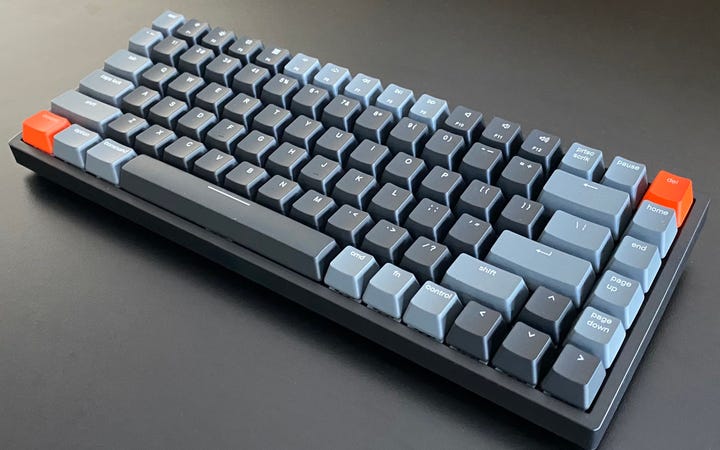
 Eric Schoon
Eric Schoon